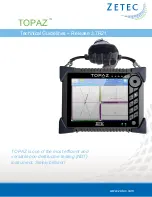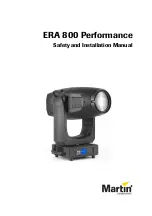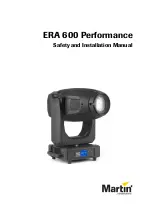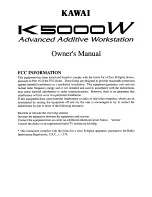
2.
Attach this end of the pressure line to the
female luer fitting assembled at the top of the
electronic control unit marked CUFF.
(
See Figure 25.)
3.
Locate the cable that extends from the blood
pressure simulator arm and plug into the top
of the Electronic Control Unit using the jack
labeled ARM.
(See Figure 26.)
At this point, the blood pressure simulator is ready
for use. The unit has been factory calibrated for use
with accessories included. No further calibration
adjustments are necessary at this time. If the unit is
to be used with a sphygmomanometer other than
the one supplied, or when recalibration is necessary,
see the section titled Calibration Procedures.
Electronic Control Unit Function
Under the display window are three buttons: Menu,
Gap, and Calibrate.
(See Figure 27.)
Setting Systolic and Diastolic Pressure
1.
Press the Menu Key once.
2.
The “Set SYSTOLIC” pressure menu will
display in the Electronic Control Unit window.
(See Figure 28.)
3.
Use the up or down arrow keys, located to the
right of the menu button, to adjust the systolic
pressure.
4.
Press the Menu key a second time.
5.
The “Set DIASTOLIC” pressure menu will
display in the Electronic Control Unit window.
(See Figure 29.)
6.
Use the up or down arrow keys located to the
right of the menu button to adjust the diastolic
pressure.
The systolic and diastolic pressures can be set any-
where from 0-300 mmHg.
Setting the Heart Rate
1.
Press the Menu Key a third time.
2.
The “Set HEARTRATE” menu will display in the
Electronic Control Unit window.
(See Figure 30.)
3.
Use the up or down keys located to the right
of the menu button to adjust the heart rate. The
heart rate can be set from 0-300 beats per minute.
Figure 25
Figure 26
Figure 27
Figure 28
Figure 29
Figure 30
17
Connecting the Arm, Electronic Control Unit, and
Sphygmomanometer
1.
Locate the end of the pressure line attached
to the sphygmomanometer that is assembled
with a male luer fitting.
HC18000028INM23.indd 17
11/16/18 9:24 AM












































